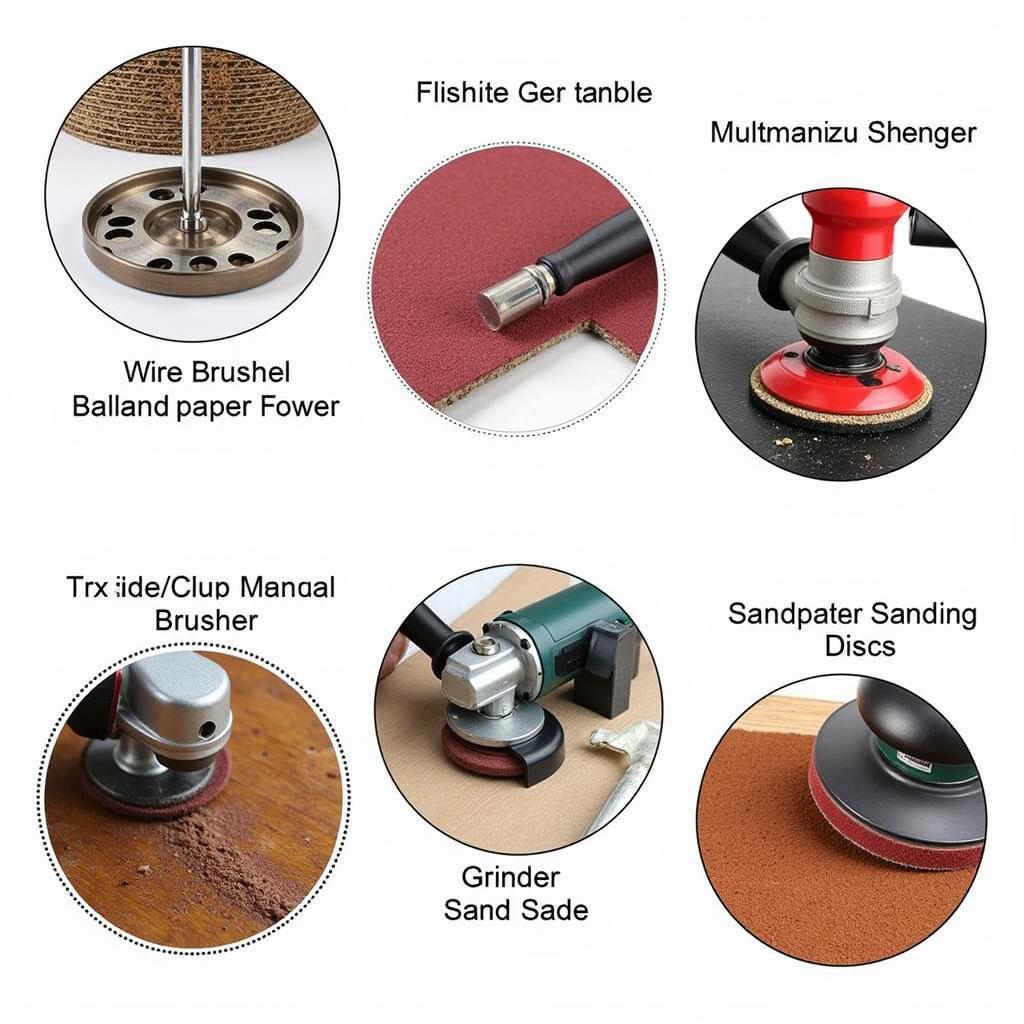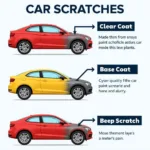Rust is a car owner’s worst nightmare. It not only looks unsightly but can also significantly compromise the structural integrity of your vehicle. Addressing rust promptly with proper rust repair paint is crucial. This guide will walk you through everything you need to know about rust repair paint for your car, from identifying rust to achieving a professional-looking finish.
Choosing the right rust repair paint can be overwhelming. Do you need a primer? What type of paint is best for your car’s make and model? How can you ensure a seamless blend with the existing paint? These are all valid questions that we’ll answer in this comprehensive guide. We’ll delve into different paint types, surface preparation, application techniques, and even provide tips for preventing future rust outbreaks. Learning how to effectively tackle rust repair yourself can save you significant money compared to professional body shop costs. You’ll also gain the satisfaction of restoring your car to its former glory.
After the initial assessment, you’ll need to prepare the rusted area for painting. This involves removing loose rust, sanding the surface, and applying a rust converter to neutralize any remaining rust. Proper preparation is essential for achieving a smooth, durable finish and preventing the rust from returning. spot repair paint car can be a good option for smaller areas.
Understanding Rust and Its Causes
Rust is the result of an electrochemical reaction between iron, oxygen, and water or moisture. This reaction, known as oxidation, causes the iron in your car’s metal to corrode, forming iron oxide, which we commonly call rust. Understanding the underlying causes of rust is crucial for effective prevention. Factors such as exposure to salt, humidity, and acidic rain can accelerate the rusting process. Regular washing and waxing can help protect your car’s paint, creating a barrier against these elements.
Identifying Different Types of Rust
Surface rust is the most common and easiest type to treat. It appears as small, reddish-brown spots on the paint surface. Scale rust, on the other hand, is more advanced and penetrates deeper into the metal, creating a flaky, scaly appearance. Penetrating rust is the most severe type, causing significant structural damage and often requiring professional repair. Knowing the type of rust you’re dealing with will help you determine the appropriate repair method and the best rust repair paint to use.
Preparing the Surface for Rust Repair Paint
Proper surface preparation is the key to a successful rust repair paint job. This involves removing the existing rust, creating a clean surface for the new paint to adhere to, and protecting the surrounding areas.
Removing Rust: Tools and Techniques
Several tools and techniques can be employed to remove rust, depending on its severity. Wire brushes, sandpaper, and even sandblasters can be used to remove loose rust and create a smooth surface. For more severe rust, a grinder with a wire wheel or sanding disc might be necessary. Remember to wear appropriate safety gear like gloves and eye protection during this process.
Priming for Optimal Paint Adhesion
After removing the rust and cleaning the surface, applying a primer is crucial. A rust-inhibiting primer helps to prevent future rust formation and provides a better surface for the paint to adhere to. Choose a high-quality primer specifically designed for automotive use and compatible with your chosen rust repair paint. car paint chip repair cost estimate can help you budget accordingly.
Choosing the Right Rust Repair Paint
Selecting the right type of rust repair paint is crucial for a long-lasting, professional-looking finish. Consider factors like your car’s make and model, the severity of the rust damage, and the desired finish.
Types of Rust Repair Paint
Several types of automotive paint are available, including acrylic lacquer, acrylic enamel, and urethane. Acrylic lacquer is easy to apply and dries quickly but is less durable than other options. Acrylic enamel offers a good balance of durability and ease of application. Urethane is the most durable option but requires more skill to apply. car paint repair eastwood offers a range of specialized products.
Matching Your Car’s Paint Color
Matching your car’s original paint color is essential for a seamless repair. You can usually find your car’s paint code on a sticker located inside the driver’s side doorjamb or in your owner’s manual. Once you have the code, you can purchase matching paint from an auto parts store or online retailer. Consider spectral paint car repair directions for specific color matching advice.
Applying the Rust Repair Paint
Applying the paint correctly is just as important as choosing the right product. Proper application techniques ensure a smooth, even finish and prevent runs or drips.
Techniques for a Professional Finish
Use thin, even coats, allowing each coat to dry completely before applying the next. Multiple thin coats provide better coverage and a more durable finish than one thick coat. Consider using a spray gun for a smoother, more professional-looking result, especially for larger areas. For localized repairs, you might explore options like car paint scratch repair poole.
Preventing Future Rust
Prevention is always better than cure when it comes to rust. Taking proactive steps to protect your car can significantly reduce the risk of future rust problems.
Regular Maintenance and Protective Measures
Regularly washing and waxing your car helps to remove dirt, grime, and salt, which can contribute to rust formation. Applying a rust inhibitor or undercoating can provide additional protection, especially in areas prone to rust, such as the undercarriage.
Conclusion
Rust repair paint is a vital tool for any car owner. By understanding the causes of rust, choosing the right paint and tools, and applying the paint correctly, you can effectively address rust issues and keep your car looking its best. Remember that regular maintenance is key to preventing future rust problems. Investing time and effort in rust repair paint now will save you significant time and money down the road, ensuring your vehicle remains in top condition for years to come.
FAQ
- What is the best rust repair paint for my car?
- How do I match my car’s paint color?
- Can I repair rust myself, or should I hire a professional?
- How can I prevent rust from forming on my car?
- What tools do I need for rust repair?
- How long does rust repair paint last?
- What is the difference between surface rust and penetrating rust?
Common Rust Repair Scenarios
- Small rock chips: Touch-up paint can be used for minor chips.
- Rust bubbles on the paint surface: Sanding, priming, and repainting are usually required.
- Rust on the undercarriage: A rust inhibitor or undercoating is recommended.
Further Reading
For more information on car repair and maintenance, visit our articles on spot repair paint car.
Need assistance? Contact us via WhatsApp: +1(641)206-8880 or Email: [email protected]. We have a 24/7 customer support team.


